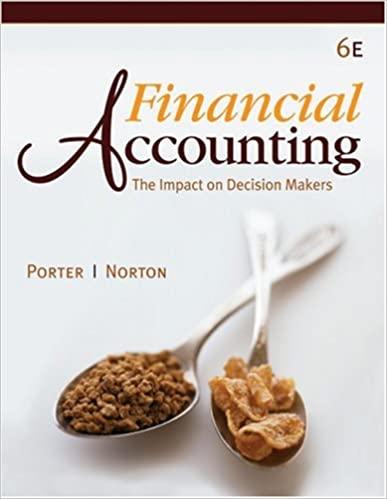Question
14. Co. S has the following beginning inventory, purchases and ending inventory: Beginning inventory 400 units at $10 each, Purchase 6/1 200 units at $15
14. Co. S has the following beginning inventory, purchases and ending inventory: Beginning inventory 400 units at $10 each, Purchase 6/1 200 units at $15 each, Purchase 9/1 300 units @ 20 each, and ending inventory 400 units. How many units did Co. X sell (total sales) during the year?
|
| A. 1,000 | |
|
| B. 600 | |
|
| C. 500 | |
|
| D. 300 | |
|
| E. None of the above |
15. Co. G has the following units of beginning inventory and purchases for the year: beginning inventory 100 units at $30 each, a 2/28 Purchase 200 units at $40 each and a 6/15 purchase of 200 units at $50 each and a 12/15 purchase of 100 units at $60 each. Using the FIFO method, if the ending inventory is 200 units, what is the cost of the ending inventory?
|
| A. 14,000 | |
|
| B. 12,000 | |
|
| C. 7,000 | |
|
| D. 6,000 | |
|
| E. None of the above |
16. Of the four inventory methodsFIFO, LIFO, Average Cost and Specific Identificationwhich method means the last item that is bought is the first item sold?
|
| A. LIFO | |
|
| B. FIFO | |
|
| C. Average Cost | |
|
| D. Specific Identification |
17. Co. T has the following beginning inventory, purchases and ending inventory: Beginning inventory 100 units at $10 each, Purchase 6/1 500 units at $15 each, Purchase 9/1 400 units @ 20 each, and ending inventory 400 units. If the average cost per unit is $16.50, using the average cost method, what is the cost of the ending inventory?
|
| A. 10000 | |
|
| B. 6600 | |
|
| C. 4950 | |
|
| D. 3300 | |
|
| E. None of the above |
18. Co. F has the following units of beginning inventory and purchases for the year: beginning inventory 100 units at $20 each, a 2/28 Purchase 200 units at $40 each and a 6/15 purchase of 200 units at $50 each and a 12/15 purchase of 100 units at $70 each. Using the LIFO method, if the ending inventory is 200 units, what is the cost of the ending inventory?
|
| A. 14,000 | |
|
| B. 12,000 | |
|
| C. 7,000 | |
|
| D. 6,000 | |
|
| E. None of the above |
19. Co. C has the following units of beginning inventory and purchases for the year: beginning inventory 300 units at $20 each and a 2/28 Purchase 300 units at $40 each. Using the FIFO method, if the ending inventory is 100 units, what is the cost of the ending inventory?
|
| A. 12,000 | |
|
| B. 8,000 | |
|
| C. 6,000 | |
|
| D. 4,000 | |
|
| E. None of the above |
20. Co. X has the following beginning inventory, purchases and ending inventory: Beginning inventory 100 units at $10 each, Purchase 6/1 200 units at $15 each, Purchase 9/1 200 units @ 20 each, and ending inventory 400 units. How many units did Co. X have available for sale during the year?
|
| A. 900 | |
|
| B. 600 | |
|
| C. 500 | |
|
| D. 400 | |
|
| E. None of the above |
Step by Step Solution
There are 3 Steps involved in it
Step: 1

Get Instant Access to Expert-Tailored Solutions
See step-by-step solutions with expert insights and AI powered tools for academic success
Step: 2

Step: 3

Ace Your Homework with AI
Get the answers you need in no time with our AI-driven, step-by-step assistance
Get Started


